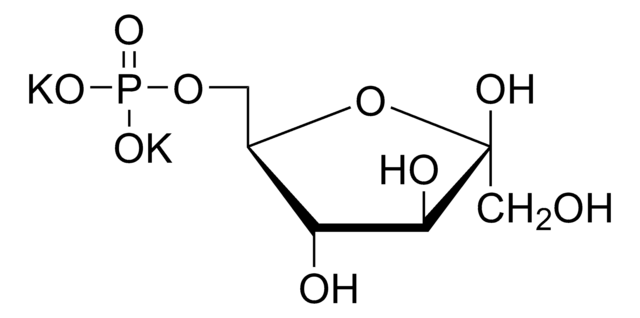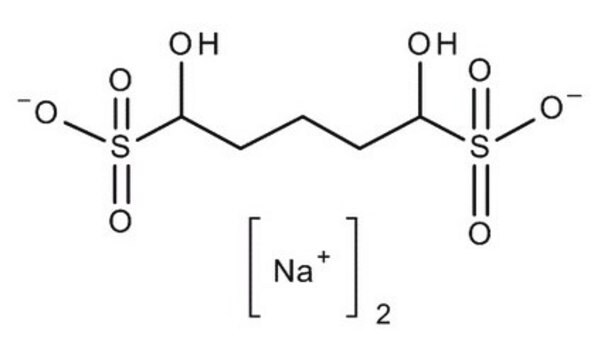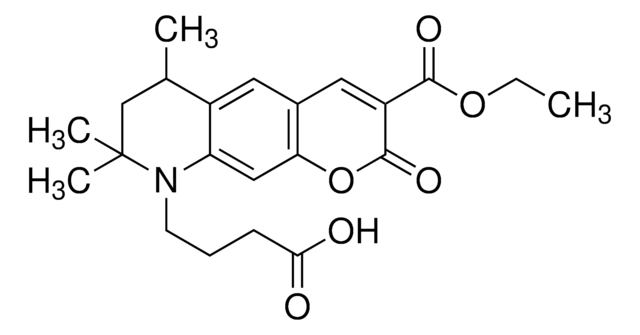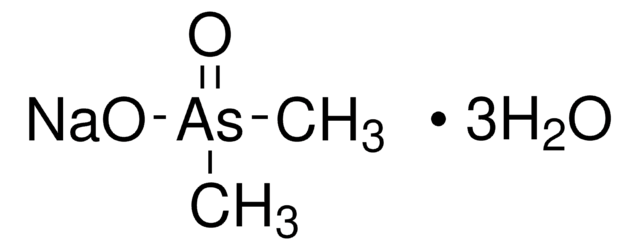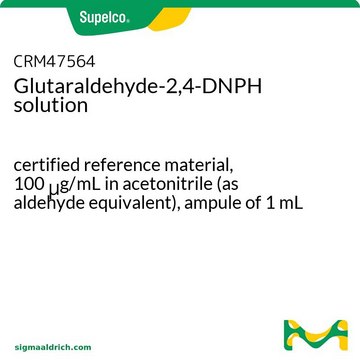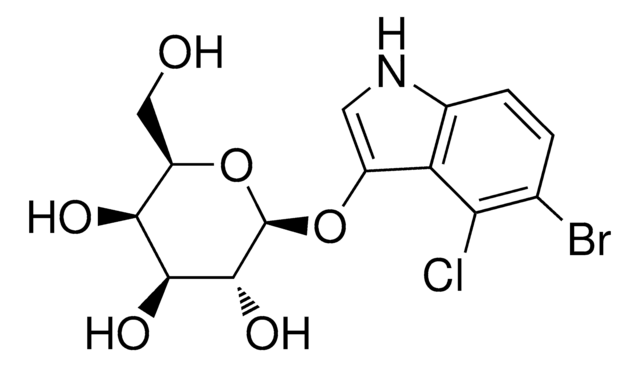Kluczowe dokumenty
G6403
Glutaraldehyde solution
50% in H2O, suitable for photographic applications
Synonim(y):
Glutaric dialdehyde solution, Pentane-1,5-dial
About This Item
Polecane produkty
Formularz
liquid
Poziom jakości
stężenie
50% in H2O
kolor
colorless
mp
-21 °C ((-6 °F))
rozpuszczalność
water: soluble
przydatność
suitable for photographic applications
ciąg SMILES
[H]C(CCCC([H])=O)=O
InChI
1S/C5H8O2/c6-4-2-1-3-5-7/h4-5H,1-3H2
Klucz InChI
SXRSQZLOMIGNAQ-UHFFFAOYSA-N
Szukasz podobnych produktów? Odwiedź Przewodnik dotyczący porównywania produktów
Zastosowanie
- Assessment of dimensional stability of novel VPES impression material at different time intervals with standard disinfectants.: This research evaluates the dimensional stability of a novel vinyl polyether silicone (VPES) impression material when exposed to various disinfectants, including glutaraldehyde solutions, demonstrating its reliability for dental applications (Ahuja et al., 2024).
Inne uwagi
Hasło ostrzegawcze
Danger
Zwroty wskazujące rodzaj zagrożenia
Zwroty wskazujące środki ostrożności
Klasyfikacja zagrożeń
Acute Tox. 3 Inhalation - Acute Tox. 4 Oral - Aquatic Acute 1 - Aquatic Chronic 2 - Eye Dam. 1 - Resp. Sens. 1 - Skin Corr. 1B - Skin Sens. 1 - STOT SE 3
Organy docelowe
Respiratory system
Zagrożenia dodatkowe
Kod klasy składowania
6.1A - Combustible acute toxic Cat. 1 and 2 / very toxic hazardous materials
Klasa zagrożenia wodnego (WGK)
WGK 3
Temperatura zapłonu (°F)
Not applicable
Temperatura zapłonu (°C)
Not applicable
Wybierz jedną z najnowszych wersji:
Masz już ten produkt?
Dokumenty związane z niedawno zakupionymi produktami zostały zamieszczone w Bibliotece dokumentów.
Klienci oglądali również te produkty
Nasz zespół naukowców ma doświadczenie we wszystkich obszarach badań, w tym w naukach przyrodniczych, materiałoznawstwie, syntezie chemicznej, chromatografii, analityce i wielu innych dziedzinach.
Skontaktuj się z zespołem ds. pomocy technicznej
